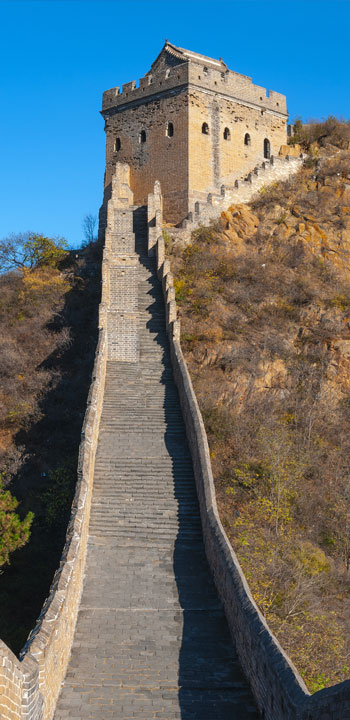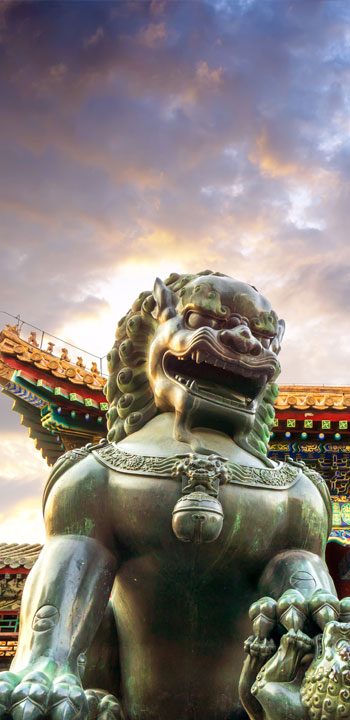Antique Porcelain Age Signs
Chinese antique porcelain age signs are important to help determine if the piece is authentic or not. Many consider antique porcelain as one of the most sought after art pieces. Simply because these beautiful items date back hundreds of years ago.
Today, the older the porcelain, the more expensive it is. But because of that, modern porcelain makers are trying to create fake antiques. Many try to replicate these age signs through different techniques.
Though their techniques are good, the signs of age in a real antique cannot be matched. Lasting for almost 2000 years, this real work of art is not easy to copy. Whether it’s the distinct art, color, or design, the old ways continue to fascinate people in this day and age.

6 Age Signs in a Genuine Antique Porcelain
A genuine antique is an art to behold. Knowing the difference between an imitation from a genuine antique is vital.
Thus, here are antique porcelain age signs that can help determine if a piece is authentic or not. It will let one know if it came from a hundred years from the past, or a replica from the modern times.


Deterioration and Discoloration
Obviously, any old item would have signs of deterioration and discoloration. For antique porcelain, this is the discoloration of the porcelain glaze. For a lot of Ming-era antiques, the cobalt color is what imitators aim for.
The cobalt tone, as well as the other pigments, don’t change color under normal conditions. However, there are obvious signs like loss of luster or shine. Due to time and surface contact, many antiques may lose their glaze.
Antique porcelain usually only changes color when it is buried, or when it has been underwater for a long time. Some antiques taken from shipwrecks have no glaze left at all.
Once the glaze is gone, the cobalt blue usually dilutes and only has little color left on the porcelain. The white color dominates and sometimes discolors, too.
Crackles
Discolored cracked lines of antiques are usually close to yellow-brown. They call these crackles.
This is an important age sign for any porcelain. Because of that, fakes found ways to replicate the yellow-brown tone. So, one must be careful when checking this sign of age.
Though crackles naturally develop over time, many of them appeared during kiln firing. Too many that they call these the kiln firing faults.
Kiln firing faults are imperfections visible in the porcelain. They say 70% of the porcelain during the Yuan and Ming dynasties had imperfections. These happened during the cooling process after kiln firing.
During the process, the porcelain gets exposed to different temperatures while cooling off. Thus, causing a hairline break or crack in the glaze.
Actually, many porcelain during the Song Dynasty (960-1279) had intentional crackles as part of their design. Even modern porcelain decorations have crackles on them, too.
As for natural crackles, the cracks turn yellow or yellow-brown depending on which element seeped through the cracks. Also, a natural crackle wouldn’t have uniform patterns. Oftentimes, just a portion or part of the porcelain may have crackles and nowhere else.
Rust Spots
Rust spots are another sign of age. Porcelain was made from clay mixed with iron. So, this iron residue will surface after a long time and turn to small spots of rust. These spots may vary from brown to black.
However, modern craftsmen trying to replicate these spots usually create large ones instead of small or tiny rust spots. Rust spots often occur when the porcelain has been moved to different locations.
Sometimes, the spots appear when the piece has been through different conditions like weather change. It is rare to find these rust spots on any porcelain that’s been kept or has remained in one location.


Glaze Contractions
Depending on the condition of the kilns, antique porcelain may have glaze contractions. Though this is not common, it can be considered a sign of age.
Glaze contractions are common, particularly in the Ming dynasty. Kiln conditions of that era have many glaze contractions because of the working area.
Oil, fat, or dirt are usually transferred to the porcelain during the process. Sometimes this could indicate that the manufacturing site isn’t very clean.
Glaze contractions happen when oil prevents the glaze from covering the entire porcelain. The contractions happen in kilning because the oil or dirt evaporates, leaving the spot without the glaze. Today, this would be part of quality control.
When the Ming era ended, the Qing dynasty began to have better quality control. Thus, glaze contractions were rare from the Qing dynasty onwards. This began after the 17th-century porcelains.
Cracks and Glaze Lines
Cracks and glaze lines are other antique porcelain age signs. One can check these fine cracks by using lens and light. Doing this reflects the lines that may be too fine for the naked eye.
Every art material is subjected to wear and tear, and these signs of age are normal. Though they’re like crackles, one antique porcelain may only have a single crack or graze line.
Whether this happened during handling, transferring, or due to weather change, all old things are susceptible to damage. Checking a piece of porcelain may need a good eye, after all.
Colors and Design
Colors used in the decorations of porcelain indicate the manufacturing era. Many colors weren’t available until the Qing dynasty; thus, there were vast amounts of cobalt or sapphire blue antique porcelains.
Besides the improved kilning process, techniques and availability of colors started appearing from the Qing era. Though an indirect sign of age, colors and design state the method and trending art of a certain period.
Knowing these colors and design helps an expert art dealer distinguish a fake from real antique porcelain.
These antique porcelain age signs are significant when checking a piece. Though a piece of porcelain looks convincing, one must be aware that there are fakes out there.
When in doubt, always ask the assistance of an expert. They can determine if the antique is authentic by checking the antique porcelain age signs.



